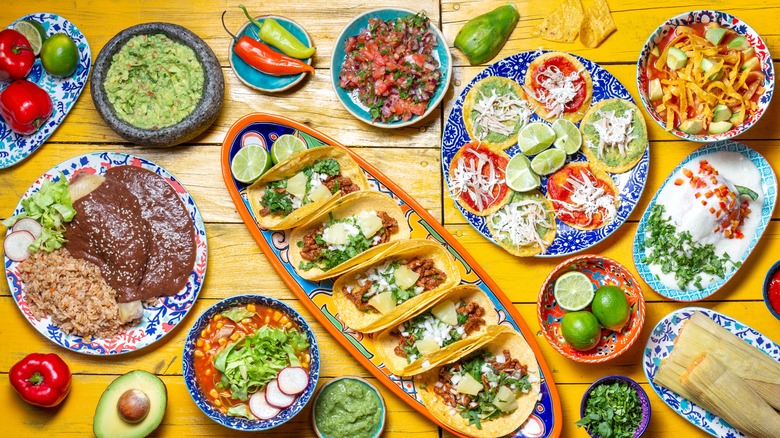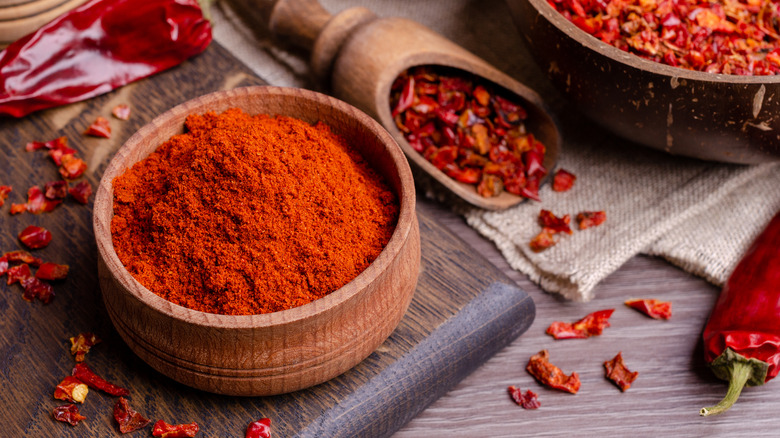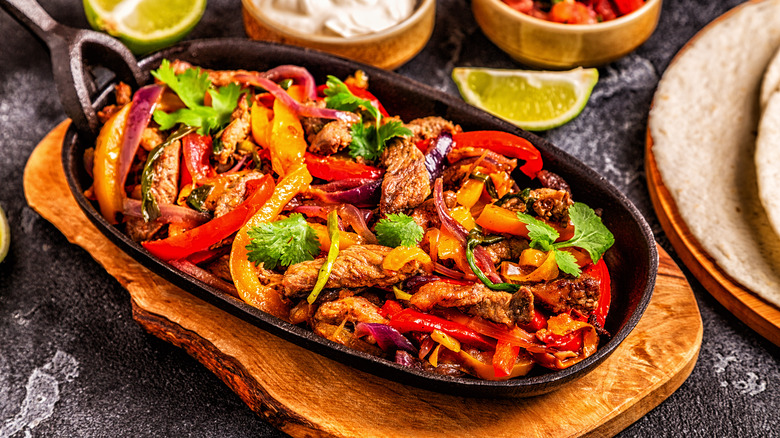Mexican Food Can Be Traced All The Way Back To 7000 BC
Who doesn't like Mexican food? We are guessing whoever is not included in the more than 238 million Americans who use Mexican food and ingredients when cooking (per Statista). Or those who don't frequent the nearly 50,000 Mexican restaurants in the United States (via IBISWorld).
Tacos, burritos, and enchiladas are just some staples many are familiar with when thinking of Mexican food. These items may be considered authentic Mexican food depending on who's asking, but pinpointing authentic Mexican food may be harder than it looks.
The cuisine is always evolving; this is especially true for Mexican cuisine. Mexico is a vast country whose cuisine has been influenced by outside countries and within its own regions throughout history (via Smithsonian). For some in America, Taco Bell may be their only experience eating "Mexican" food, though most might label Taco Bell as "inauthentic."
Then there's Tex-Mex food, which was born by fusing Mexican and American cuisines. Whether you're eating Taco Bell, Tex-Mex, or authentic dishes, Mexican food has a long history that dates back millennia.
Some ingredients predate modern day Mexican cuisine
Many ingredients used in Mexican cuisine today can be traced back to 7000 BC, when Mesoamerican civilizations were shifting towards agriculture (via Texas Monthly). During this time, several Indigenous societies in present-day Mexico and Central America began to cultivate plants and herbs.
According to Mary's Center, Indigenous groups grew maize, chili peppers, beans, tomatoes, sweet potatoes, and more. Fruits, such as avocados, bananas, and papayas originated in Mesoamerica (via the Canadian Museum of History). In fact, guacamole was crafted first in Mesoamerica, according to Atlas Obscura. The original guacamole recipe was pretty simplistic; it called for only mashed avocados, sugar, and lime juice.
Maize or corn was an important crop, in particular, especially for the Olmecs and later the Mayans (via ThoughtCo.). In fact, tortillas and tamales, which are typically made from corn, were derived from Indigenous recipes. Indigenous groups, grew chili peppers, leading to the creation of popular Mexican food, like enchiladas and salsa (via Texas Monthly). Per World of Wine, salsa got its start specifically within the Aztec civilization.
Spanish and American influences
What we considered Mexican cuisine today has been greatly influenced throughout centuries due to Spanish colonization and the United States' presence. While we may find recipes that call for meats, such as chicken, beef, or pork, these animals didn't exist originally in Mesoamerica. According to Tastessence, Ingenious groups typically ate turkeys, rabbits, armadillos, and other animals.
When the Spanish Empire colonized Mexico in the 1500s, they introduced new meats, like pork and beef as well as dairy, per World Food and Wine. Today's Mexican fare embraces cheese and meats bought over by the Spanish. Dishes, such as lomo en adobo (pork loins in adobo sauce) and chile Rellenos (stuffed peppers) are products of the fusion (via Tastessence).
Mexican cuisine has gone global, including its upstairs neighbor, the United States. In fact, Tex-Mex is probably what many Americans are used to eating. Nachos, chili, and fajitas are just some Tex-Mex fare (via First We Feast). Tex-Mex, which blends Mexican and American cuisines, grew out of San Antonio, Texas in the 1880s, according to History. People started to incorporate ingredients found in America into Mexican dishes and that's how chili con carne, or chili with meat, came to be (via Thrillist).


